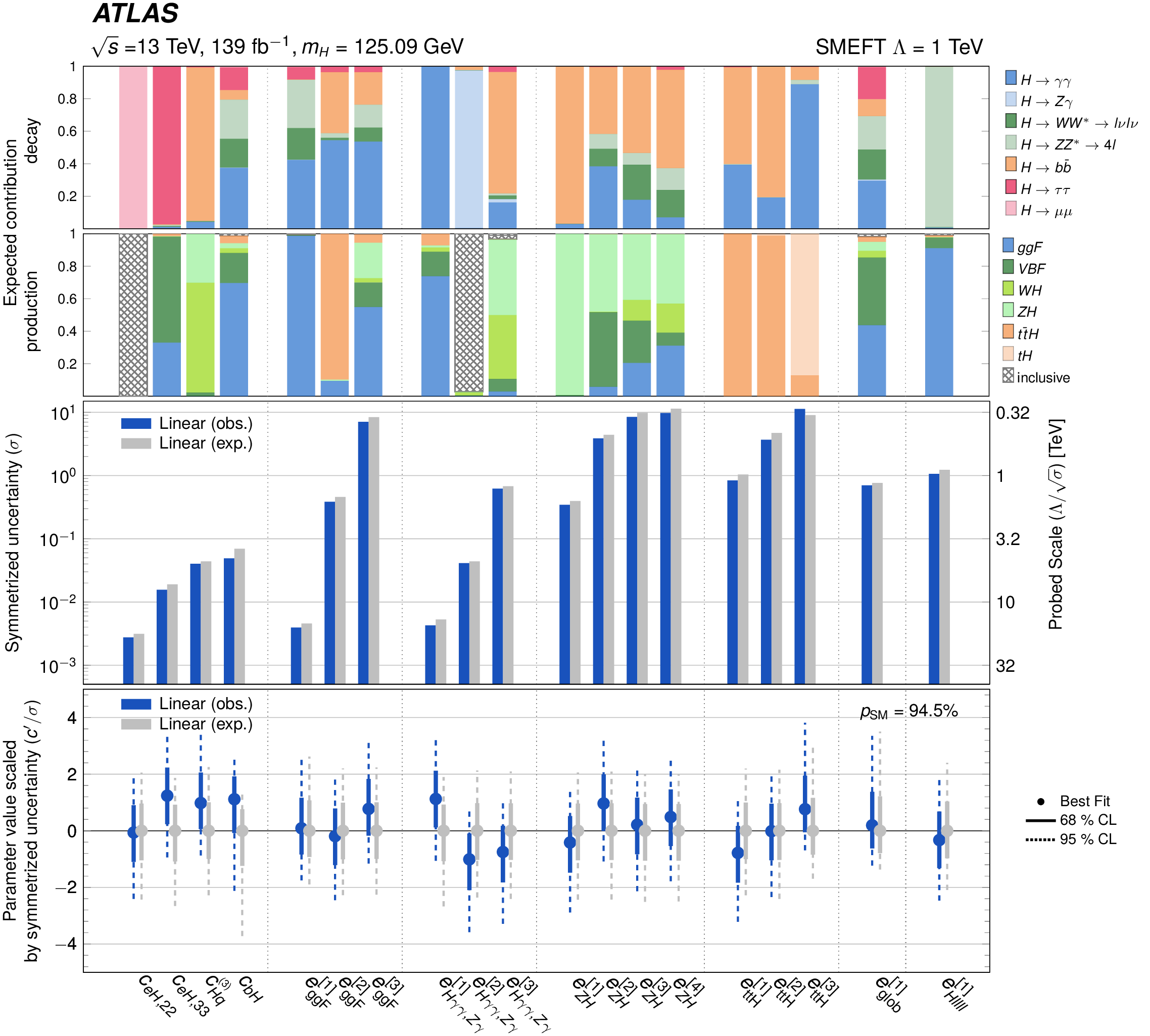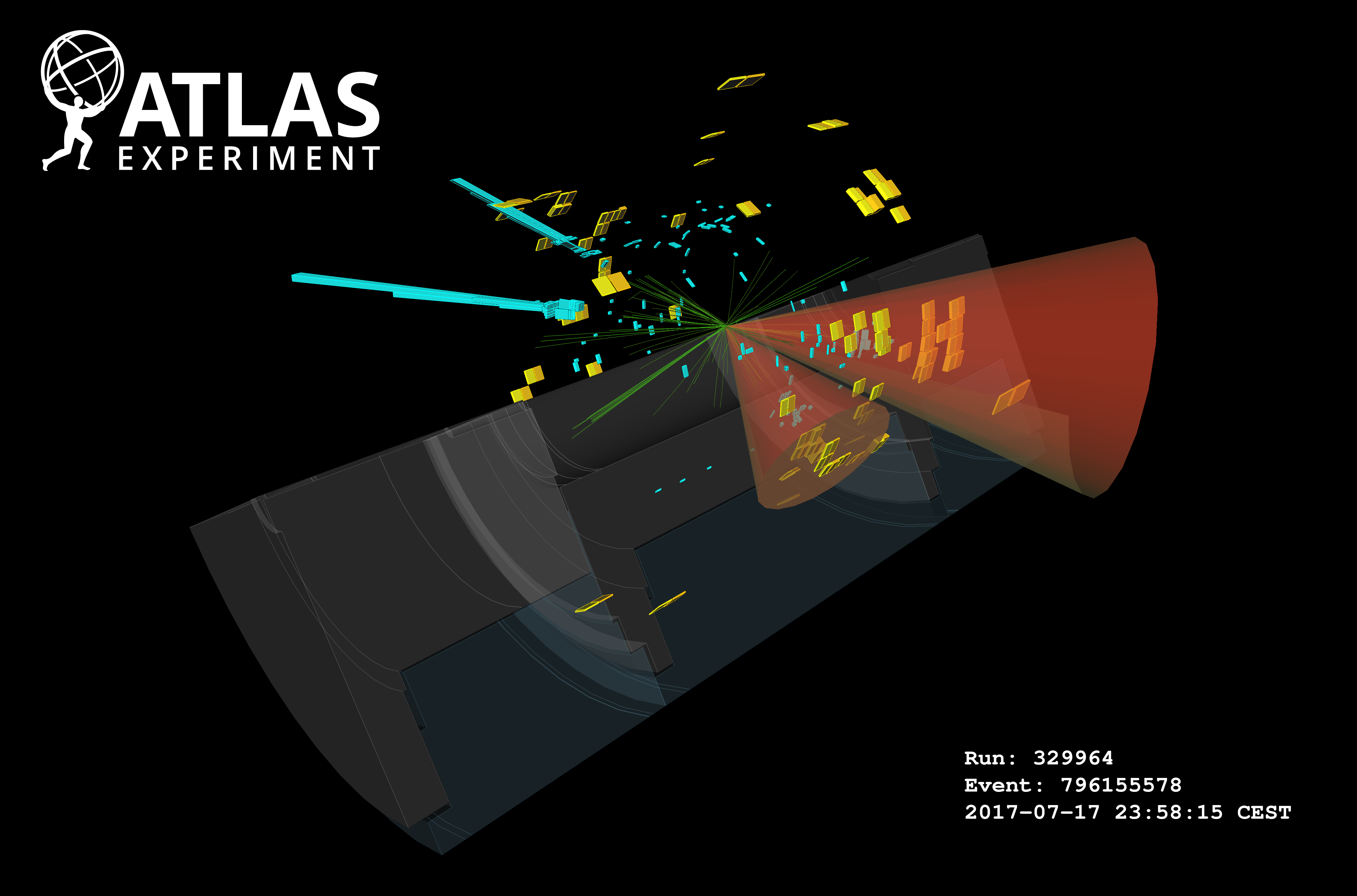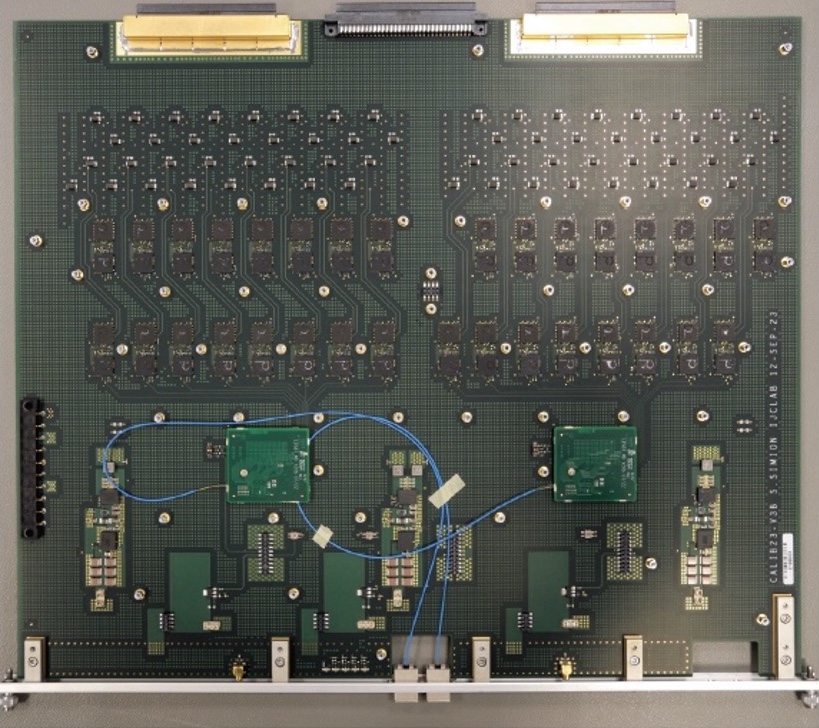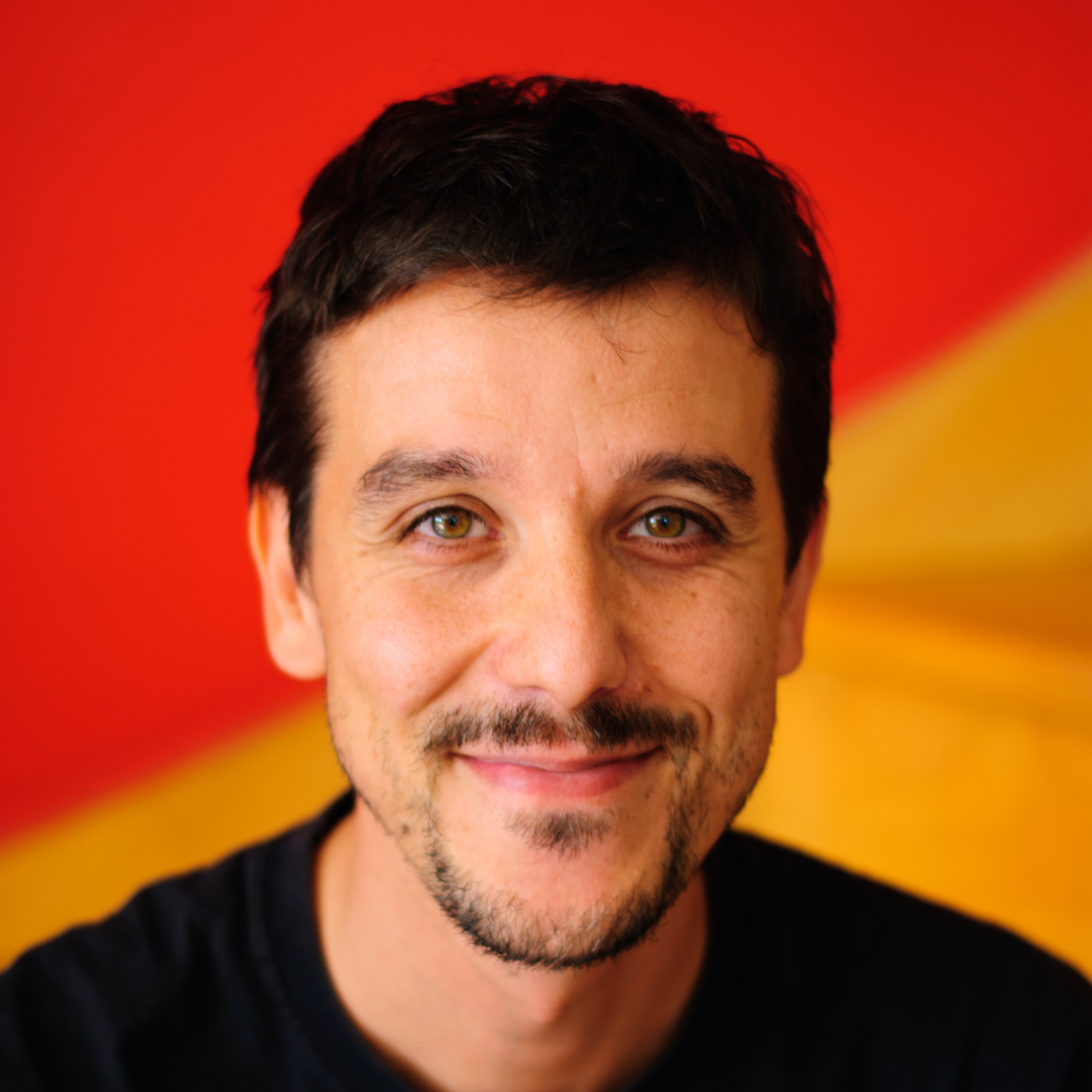Research

My research focuses on precision studies of the Higgs boson as a member of the ATLAS Collaboration, particularly in the $\gamma\gamma$ decay channel. I have contributed to the search and discovery of the Higgs boson, to the precise measurement of its mass and couplings, and to their interpretation in the search for indirect signs of physics beyond the Standard Model (BSM). This work is grounded in a strong commitment to optimizing object reconstruction and calibration — essential building blocks for all measurements in high-energy physics. I have served the ATLAS Collaboration as convener of the \(e/\gamma\), $H \to \gamma\gamma$ and the Higgs working groups, and have been the ATLAS convener of the LHC Higgs Working Group 2 (Higgs Properties). I currently co-coordinate the LHC Higgs Combination Working Group.

The discovery of a Higgs boson at the LHC marked a milestone for the Standard Model. Yet, despite extensive searches at energies up to several TeV, no clear evidence of BSM physics has emerged. This leaves the field at a crossroads, with no experimental indication of the energy scale where the Standard Model might break down — though naturalness arguments suggest that new physics should appear well below the Planck scale. In this context, I believe the LHC Run-3 and High-Luminosity phase should prioritize precision measurements in the Higgs sector. In particular, completing our understanding of the Higgs mechanism by probing the Higgs self-coupling — the last unmeasured parameter of the Standard Model — is crucial. Moreover, improving the precision of Higgs-related observables sensitive to BSM effects, interpreted in the framework of Effective Field Theories, will be essential to guide future discoveries.
I am also actively involved in the ATLAS detector upgrade for the High-Luminosity LHC (HL-LHC) and in preparing for the next generation of collider experiments through early-stage physics and detector R&D. These efforts are aimed at enhancing the experimental capabilities necessary to explore the frontiers of particle physics in the coming decades. I am particularly enthusiastic about the Future Circular Collider (FCC) project, which I strongly believe holds the potential to push the boundaries of our understanding of particle physics and offer groundbreaking insights into new physics.
Current projects
Search for $HH \to b\bar{b} \gamma \gamma$ Production and Higgs Self-Coupling EFT Interpretation

The $HH \to b\bar{b} \gamma \gamma$ channel is one of the most promising for measuring the Higgs boson’s self-coupling properties through the search for double Higgs production. With LHC Run 3 underway and an extended dataset expected, we aim to enhance the sensitivity of this measurement using new machine-learning techniques and advanced calibration methods. Key improvements include refining photon identification and employing a new $b$-tagging algorithm. The $HH \to b\bar{b} \gamma \gamma$ measurement will be interpreted in the SMEFT framework, providing a crucial ingredient to the global EFT fit of the Higgs properties.
Development of the new electronic calibration board for the Phase II upgrade of the ATLAS LAr calorimeters

The development of the new electronic calibration board is a pivotal component of the Phase II upgrade for the ATLAS Liquid Argon (LAr) calorimeters for HL-LHC. This board aims to provide precise calibration pulses that closely mimic the ionization signals within the calorimeter, ensuring accurate energy measurements across all channels. The system employs two custom-designed ASICs: LADOC, a 16-bit DAC fabricated using TSMC 130nm CMOS technology, and CLAROC, a pulser chip developed with XFAB 180nm technology. Their goal is to generate calibration pulses with a dynamic range from 5 µA to 320 mA, achieving an integral non-linearity better than 0.1% and a uniformity across channels within 0.2%. I co-coordinate the R&D of the LAr Phase II calibration board within ATLAS, and lead this activity at LAPP.
R&D for a High-Granularity Noble-Liquid Calorimeter for the FCC-ee ALLEGRO Detector

ALLEGRO (A Lepton-Lepton collider Experiment with Granular Read-Out) is a proposed detector for the FCC-ee featuring a highly granular noble-liquid sampling electromagnetic calorimeter. Leveraging the proven performance of noble-liquid calorimetry — including excellent energy resolution, stability, and radiation hardness — the project explores innovative PCB-based readout technologies to achieve fine granularity. The group I coordinate at LAPP contributes to the ongoing R&D adapting this technology for ALLEGRO, including simulation of detector geometries, studies of cross-talk effects with various readout configurations, PCB development, and the development of pion–photon separation algorithms for $\tau$ reconstruction.
